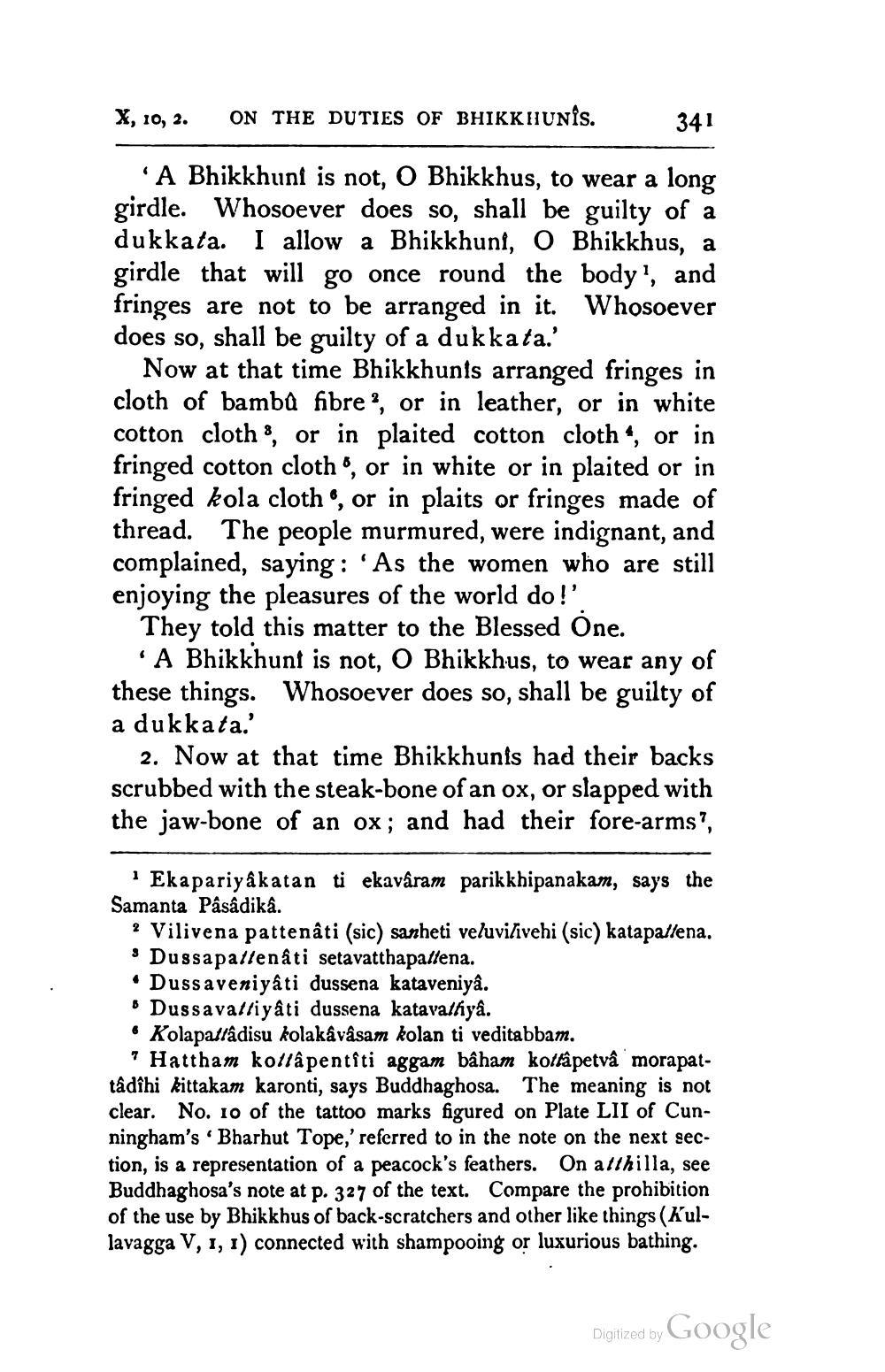________________
X, 10, 2.
ON THE DUTIES OF BHIKKHUNÍs.
341
*A Bhikkhunt is not, O Bhikkhus, to wear a long girdle. Whosoever does so, shall be guilty of a dukkata. I allow a Bhikkhuni, O Bhikkhus, a girdle that will go once round the body', and fringes are not to be arranged in it. Whosoever does so, shall be guilty of a dukkata.'
Now at that time Bhikkhunts arranged fringes in cloth of bamba fibre?, or in leather, or in white cotton clotho, or in plaited cotton cloth, or in fringed cotton cloth", or in white or in plaited or in fringed kola clotho, or in plaits or fringes made of thread. The people murmured, were indignant, and complained, saying: 'As the women who are still enjoying the pleasures of the world do!'
They told this matter to the Blessed One.
* A Bhikkhunt is not, O Bhikkhus, to wear any of these things. Whosoever does so, shall be guilty of a dukkata.
2. Now at that time Bhikkhunfs had their backs scrubbed with the steak-bone of an ox, or slapped with the jaw-bone of an ox; and had their fore-arms?,
Ekapariyâkatan ti ekavaram parikkhipanakam, says the Samanta Pasadika.
? Vilivena pattenâti (sic) sanheti veluvilivehi (sic) katapallena. • Dussapallenati setavatthapaltena. • Dussaveniyâti dussena kataveniya. * Dussavatliyâti dussena katavalhya. • Kolapalladisu kolakâvâsam kolan ti veditabbam.
' Hattham kotlâpentîti aggam bâham kottậpetvâ morapattâdîhi kittakam karonti, says Buddhaghosa. The meaning is not clear. No. 10 of the tattoo marks figured on Plate LII of Cunningham's 'Bharhut Tope,' referred to in the note on the next section, is a representation of a peacock's feathers. On atthilla, see Buddhaghosa's note at p. 327 of the text. Compare the prohibition of the use by Bhikkhus of back-scratchers and other like things (K’ullavagga V, 1, 1) connected with shampooing or luxurious bathing.
Digitized by
Digitized by Google




